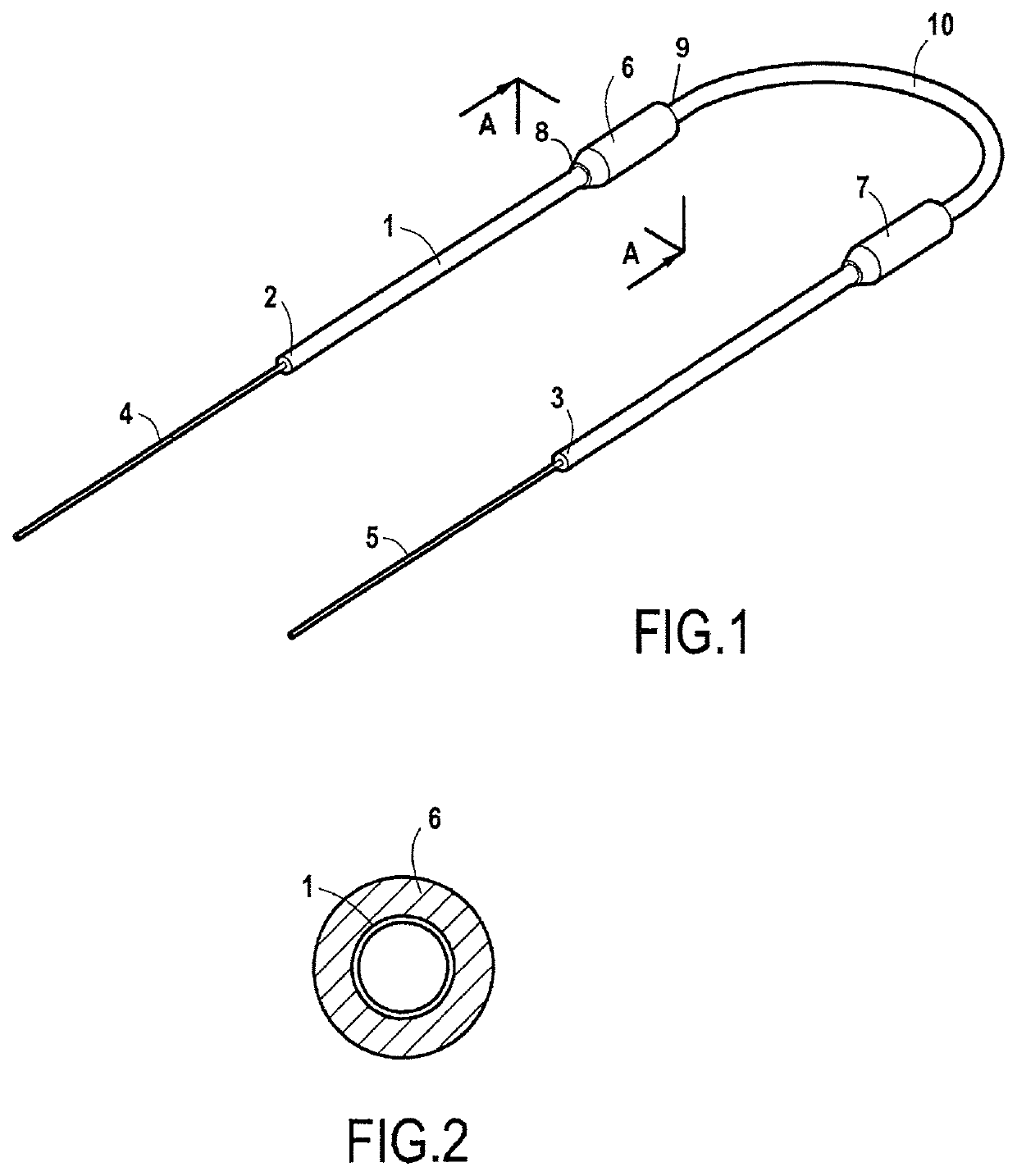Autostable bicanalicular probe
a bicanalicular and probe technology, applied in the field of bicanalicular probes, can solve problems such as difficulty for surgeons to manipulate, and achieve the effects of less traction, less traction, and avoiding the phenomenon of “cheese wiring”
- Summary
- Abstract
- Description
- Claims
- Application Information
AI Technical Summary
Benefits of technology
Problems solved by technology
Method used
Image
Examples
Embodiment Construction
[0018]FIG. 1 shows a bicanalicular probe intended to be inserted into the nasolacrimal duct of a patient. This probe consists of a silicone tube 1 that extends between two end points 2 and 3. Two termination parts 4 and 5 protrude from the end points 2 and 3 and enable the probe to be inserted. The parts 4 and 5 are thinner than the tube 1.
[0019]These termination parts can be guide wires, preferably in PEEK, as described in patent FR-A-2992851 and in which the tube / guide wire joint is chamfered to prevent any roughness from rubbing against the nasal wall during insertion.
[0020]The parts 4 and 5 may also be mandrels as shown in the document U.S. Pat. No. 4,380,239 in which the tube / mandrel joint is also chamfered. They may also be mandrels, preferably of external diameter 0.80 mm and length 80 mm, assembled with the silicone tube 1 as described in patent FR-A-2700722. They may also be metal mandrels of external diameter 0.4 mm and length 60 mm bonded to the inside of the silicone tub...
PUM
 Login to View More
Login to View More Abstract
Description
Claims
Application Information
 Login to View More
Login to View More - R&D
- Intellectual Property
- Life Sciences
- Materials
- Tech Scout
- Unparalleled Data Quality
- Higher Quality Content
- 60% Fewer Hallucinations
Browse by: Latest US Patents, China's latest patents, Technical Efficacy Thesaurus, Application Domain, Technology Topic, Popular Technical Reports.
© 2025 PatSnap. All rights reserved.Legal|Privacy policy|Modern Slavery Act Transparency Statement|Sitemap|About US| Contact US: help@patsnap.com

